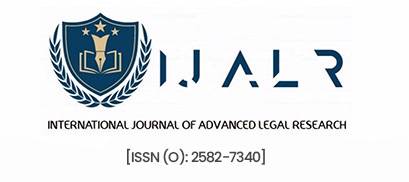INTRODUCTION
Since its creation UNEP had placed development of environmental law among its major activities. This was the mandate given to UNEP by the UN General Assembly resolution 2997(XXVII) and subsequent decisions of the UNEP Governing Council. During the 1970s these activities were mostly of an Ad hoc nature in response to specific requests from the Governing Council. The speedy pace of international environmental law – making in general and of the respective UNEP actions, in particular required a clear cut programmatic approach.
The United Nations Environment Programme (UNEP) acted as a catalyst in the development of International Environmental Law. At the beginning of its initiation, UNEP prepared a set of 15 draft principles on the conduct of states in the field of the environment regarding conservation and harmonious utilization of natural resources shared by two or more states.[1] These principles were prepared by the request of the U N General Assembly which called for adequate international standards for the conservation and utilization of natural resources common to two or more states. The Charter of Economic Rights and Duties of States adopted by the General Assembly also incorporated similar principles.[2] These principles were adopted by the UNEP Governing Council but it was not considered by the General Assembly. The reason for this, it did not provide a specific legal obligation under International Law, or the absence of such obligations.[3]
For the formulation of some general principles of International Environmental law, the Governing Council of UNEP adopted an ambitious plan for the development and periodic review of environmental law, which was prepared at an Ad hoc meeting of senior government official’s expert in environmental law at Montevideo (Montevideo Programme).[4] Montevideo Programme contributed to the development of both soft law and hard law instruments in international environmental law. It became an ambitious exercise in laying down a framework, method and programme for the development of environmental law. It recognized the importance of codification and progressive development of environmental law to promote international cooperation, mutual understanding and friendly relations among states, apart from serving as an essential instrument for proper environmental management and improvement of the quality of life.
The Montevideo Programme not only established the milestones to be followed in the development of international environmental law, it also required a periodical review to determine its adequacy to current needs and to assess the result of its implementation. This would help for addition of new emerging issues in the decade and also take initiation for tackling that issue. UNEP has organized and coordinated its Environmental Law activities through a series of Ten year Programmes for the Development and Periodic Review of Environmental Law. One of the problem faced at the time of designing the programme was to anticipate the emerging issues that would need to be tackled and those issues were related to multilateral environment agreements or to other emerging issues.
In 1981, a group of senior Government Officials Expert in environmental law representing Governments from around the world met in Montevideo, and developed a long – term, strategic guidance for United Nation’s Environment Programme(UNEP) in the field of Environmental Law. It was adopted by the Governing Council of UNEP in 1982 and become a UNEP long – term programme(The Montevideo Programme for the Development and Periodic Review of Environmental Law).
[1] UNEP Principles on Conservation and Harmonious Utilization of Natural Resources Shared by Two or More States (1978); for the text, see ILM, Vol. 17, 1978, pp.1097-99.
[2] Article 3 of the Charter of Economic Rights and Duties of States (1974) provided:
In the exploitation of natural resources shared by two or more countries, each state must cooperate on the basis of a system of information and prior consultation in order to achieve optimum use of such resources without causing damage to the legitimate interest of others; See ILM, Vol.14, 1974, p.251.
[3]Bharat H Desai (2004), Institutionalizing international Environmental Law, New York: Transnational Publishers, p 88.
[4] See Report of the Ad hoc Meeting of Senior Government Officials Expert in Environmental Law, UNEP/GC 10/5/Add,2, and Corr.1.

